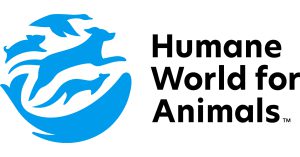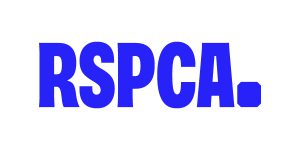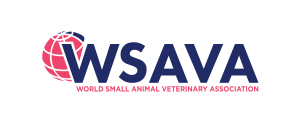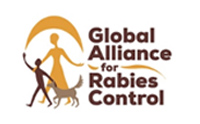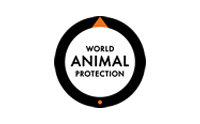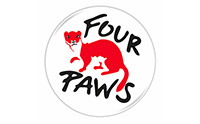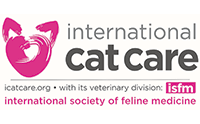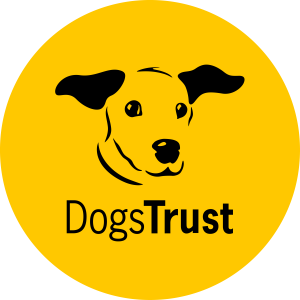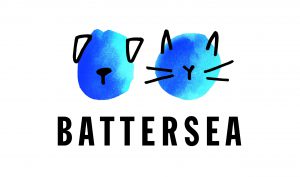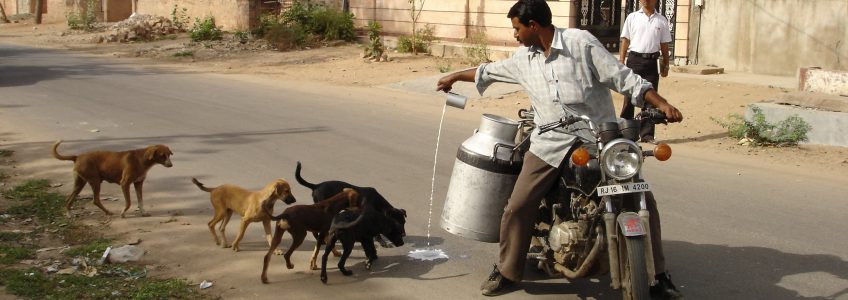
Feeding programmes of roaming dogs and cats were an urgent response to COVID lockdowns in many countries, driven by compassion for these animals who were suffering through no fault of their own. As this response ebbs and flows with the imposing and releasing of lockdowns, ICAM spotted an opportunity to learn and reflect on the dependency of these animals on our collective care. In particular, we wanted to explore the relationship between the numbers of roaming dogs and cats, their behaviour and access to food resources. Whether through purposeful feeding or access to the organic solid waste produced by people.
Share your observations
Our discussions allowed us to reflect on our experiences and explore the theory of carrying capacity; the number of animals a habitat can support. It also exposed how little data we have on this subject. ICAM have developed a position statement on dog and cat population management and its relationship with changes in food resources. But we also call on the population management field to share your experiences of how dogs and cats have responded to changes in food resources in your location. We would like to hear if you have seen a notable change in terms of dog or cat numbers or behaviour in response to changes to food resources. And just as valuable are the experiences of a robust lack of impact, exposing that for some dogs and cats their population numbers and behaviour are controlled by factors other than food resources. Please email info@icam-coalition.org with your observations, we’d appreciate hearing from you.
Feeding animals
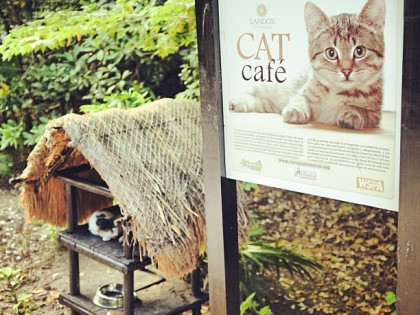
Feeding of roaming dogs and cats can be an expression of compassion for animals, a way of experiencing a valued positive interaction with animals, a cultural norm and a religious practice. It’s also an ancient practice that is probably a precursor to the process of domestication of dogs and cats.
The idea of using feeding stations to locate feeding, and therefore the likely presence of roaming animals, to identified low-conflict areas is also a relatively old method of population management. These were not only feeding stations but provided an opportunity to access animals for sterilisation, vaccination and parasite control and provided ongoing monitoring of health and the arrival of unsterilised immigrants. Perhaps the best-known example is ‘cat cafes’, originally developed by the World Society for the Protection of Animals (now World Animal Protection). Although this term has been recently repurposed for cafes that feed people in the presence of friendly cats!
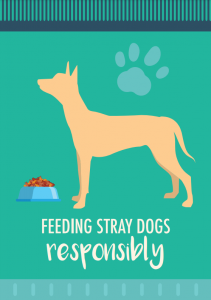
The feeding of roaming dogs and cats may be as old as the process of domestication, but so is its potential to cause conflict within a community. Attitudes towards dogs and cats are likely not homogenous across a community and so the presence of these animals, especially if they congregate in high densities around a feeder, can be upsetting for some people. The response of some authorities has been attempts to ban feeding. These bans tend to fail as the feeders strongly defend their actions, fuelling yet more community conflict. However, other authorities have taken the approach to define and demand that feeding is done ‘responsibly’. One example is in Singapore, where animal welfare groups have worked with the Animal & Veterinary Service to establish responsible feeding expectations and pair these with dog and cat sterilisation programmes.
Organic solid waste
We also explored the issue of food resources from organic solid waste accessible to dogs and cats in bins, streets and dumps. If you review texts on the subject of dog population management, you find many make passing comment on improving waste management for the purpose of controlling populations. But in our collective experience, we had never heard of this actually being done in the field with either dogs or cats. This appears to be entirely based on the theory of reducing carrying capacity in order to reduce population size.
But let us look closer at the mechanism of how reducing carrying capacity may actually alter populations of dogs and cats. Populations are controlled through the processes of birth, death, immigration and emigration. In humane population management we aim to; reduce birth through reproduction control; reduce immigration through prevention of abandonment; and increase emigration through adoption. Control through death is the business of culling and is inherently inhumane and ineffective as it tends to be countered by increased birth. Improved organic waste management may (more on this later) reduce carrying capacity and hence the maximum number of animals that can be supported in the area reduces. The population processes at play would include emigration, if options to go elsewhere exist, and reduced reproductive output, seen as smaller litter sizes and fewer litters. But it would also play out as an increase in death rates as malnutrition shortened lives. We would observe an increase in the proportion of animals with visibly poor body condition and an increase in the number of puppies and kittens dying before they reach adulthood. There may also be behaviour changes in the roaming animals, including defensive aggression over the remaining limited resources, as they become more desperate for food. Some of these changes in body condition and behaviour were observed following COVID lockdowns and gave impetus for feeding programmes. In short, controlling the population through a reduction of organic solid waste is inhumane.
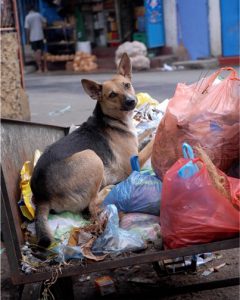
However, we also reflected on a publication by Michelle Morters (2014). She was studying dog populations in Bali and South Africa, most of these dogs were owned but also free to roam and were often seen foraging in rubbish. Michelle took the time to investigate this rubbish and found “Most of the rubbish in the study areas consisted of inedible, inorganic matter. The remainder was poor-quality organic matter, including food waste”. She tracked the condition and survival of individual dogs over time and found those unowned dogs reliant on foraging in rubbish for their food source were in a poor welfare state and lived short lives. Those foraging dogs in visibly good welfare were only foraging out of pure desire, rather than to meet nutritional needs, as most of their food resources came from their owners at home. But even the most pampered pet enjoys a nosing in rubbish for leftover food!
Michelle’s experience aside. We could all recall examples of dogs and cats accessing waste with high nutritional value, most often offal from slaughterhouses, butchers and fish markets. The animals accessing such proteinaceous waste may well be able to survive and breed successfully. In these cases, a reduction in this waste could indeed lead to the population processes mentioned previously.
What drives improvements in solid waste management?
We also then considered published literature and our experiences of where organic solid waste management had been done and what drove that change. To the best of our collective knowledge, there are no publications, grey literature or anecdotes of solid waste management being improved for the purposes of population management of dogs or cats with a resulting impact on their numbers. Should such evidence exist, we would welcome the opportunity to learn more.
Solid waste management has a significant impact on many important issues other than dog and cat populations, including air pollution, water contamination, soil erosion and greenhouse gas emissions. An improvement in solid waste management is a target of SDG 11 (sustainable cities) and has implications for SDG 1 (no poverty), SDG 6 (clean water and sanitation) and SDG 13 (climate action). An improvement in solid waste management is therefore an inevitable part of human development, in particular for urban environments. Waste management improvements will be driven by many powerful human development motivations and require no further motivations from dog or cat populations.
So what is our dog and cat population management role?
The conclusion to our deliberations was that it is not appropriate for those involved in dog or cat population management to call for greater organic solid waste management. Solid waste management improvements will happen regardless, driven by environmental and public health motivations. Rather, it is the role of dog and cat population management implementers to recognise this inevitability and prepare dogs and cats to cope by ensuring they are not reliant on this waste for their essential nutrition. This can be achieved through improving responsible ownership of owned animals and responsible care of community animals, including feeding. As well as a reduction in roaming dog and cat density through sterilisation and prevention of abandonment.
And in recognition of the strongly defended and compassionate feeding of roaming dogs and cats that we have all witnessed in our personal and professional lives. We concluded that this should not be discouraged. However, conflicts within communities over feeding can occur and should not be ignored. Hence ICAM supports the responsible feeding of dogs and cats, including expectations of what, how and where animals are fed:
- What
- Feed nutritious and safe food (i.e. not contaminated or ‘off’).
- How
- Feed in containers. Do not place food directly on the floor.
- Remove uneaten food within 2 hours.
- Refresh water every day to prevent contamination and mosquitoes breeding.
- Where
- Feed in areas that are safe for the animal and minimise conflict with community members
- Obey requests to feed in designated feeding areas and not in areas where feeding is prohibited (e.g. some nature reserves)
- And…
- All roaming animals should be vaccinated against rabies (this is not required in those countries with no risk of rabies). Ideally, these animals are also vaccinated against other diseases and given regular parasite treatment.
- All roaming animals should be sterilised, if these are owned animals, this must be with the consent of the owner.
- Signs of medical distress require the prompt attention of a veterinarian or qualified animal health professional.
- Identification of individual animals helps with tracking these management actions and helps feeders communicate with each other about individual animals.
- Regular and frequent feeding may build up dependency on these food resources. Hence feeders must be committed to continuing to provide these resources, with any changes to regularity and frequency introduced slowly to allow animals time to find and adapt to alternative resources.
We acknowledge that this represents the ideal situation and individual feeders may not be able to fulfill all these requirements. However, for roaming animals that are fed by more than one person these may become possible if feeders act as a collective.
About International Companion Animal Management (ICAM) Coalition
ICAM supports the development and use of humane and effective companion animal population management worldwide. The coalition was formed in 2006 as a forum for discussion on global dog and cat management issues.
Our key goals are to:
- Share ideas and data
- Discuss issues relevant to population management and welfare
- Agree definitions and hence improve understanding
- Provide guidance as a collegial and cohesive group
Contact information: info@icam-coalition.org
Twitter: @ICAMCoalition

